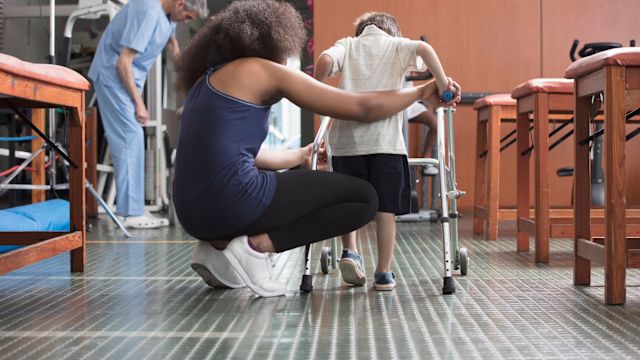Updated on October 1, 2024
Achondroplasia is a genetic disorder that affects the normal growth and development of bones. Short stature, short limbs, larger than average head, prominent forehead, and flattened nasal bridge are among the most common symptoms, though the condition affects different people in different ways.
The treatment for achondroplasia will involve a multidisciplinary team—healthcare providers with different specialties who work in coordination with one another. A team can include healthcare providers who specialize in pediatric care, pulmonology, orthopedic surgery, and neurology. It can also include a genetic counselor, social worker, physical therapist, occupational therapist, and mental health professional.
The goal is to provide comprehensive care, addressing the different ways that achondroplasia can affect a person’s health.
Working with an achondroplasia care team
Good communication with a child’s healthcare team will help that child get the best care possible. Sometimes, knowing how to get started can be a challenge, especially if the diagnosis is recent. With that in mind, here are six questions to help you get started talking to your child’s healthcare team about treatment.
What treatment options are available?
This is the first question on most people’s minds whenever they learn that any loved one has a health condition—what treatments are available. Treatment needs will depend on a child’s symptoms and their risk of complications.
A major focus of treatment is addressing complications and reducing the risk of complications. Examples of complications include problems with mobility, recurrent ear infections, sleep apnea, weight gain, and fluid buildup in the brain.
Some complications are treated with surgery. Adaptations at home, accommodations at school, and social support are also important parts of a treatment plan.
Are there therapies to improve bone growth and height?
Treatment for achondroplasia is also evolving. The first treatment to promote bone growth became available in 2021. Other therapies are under development, and some may become available in the future. Some parents and caregivers may also want to discuss clinical trials for emerging therapies.
What information does the healthcare team need?
In many circumstances, you will be the healthcare team’s best source of information. Healthcare teams rely on parents and caregivers for updates on how a child is doing on a day-to-day basis, what is challenging, what changes you’ve noticed, what concerns and questions you have. Ask the healthcare team what information is useful and what you can do to communicate this information. For example, keeping a journal with notes on each day can be useful.
What can I do if I have concerns about treatment cost?
Any health condition that requires ongoing management can create financial stress. There are professionals who can help you navigate this aspect of care. A good place to start can be talking to a social worker on staff at the medical center where you and your child meet with your healthcare team.
What are the next steps that I can take?
It helps to go into an appointment with a goal. It also helps to leave an appointment with a clear idea of what you need to do next or what you can do next. This may be making an appointment with a specialist, contacting your insurance company, or making adaptations around the home.
This may also be something that you need to do for yourself. Being a parent or caregiver to a child with achondroplasia can feel stressful and overwhelming. In order to provide a child with achondroplasia with support and care, you will need to look after your own physical and mental health. Ask what resources are available for parents and caregivers. Ask what your care team recommends.






